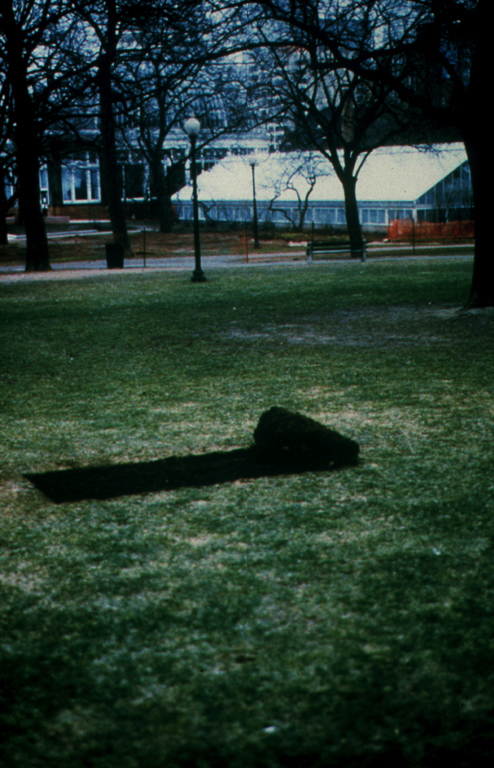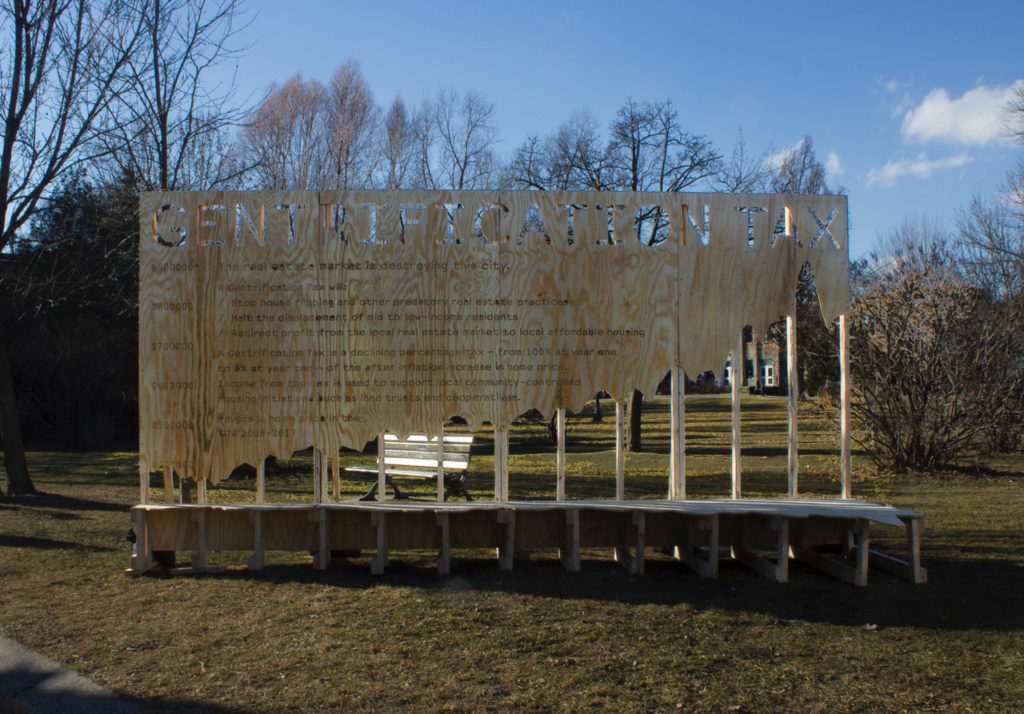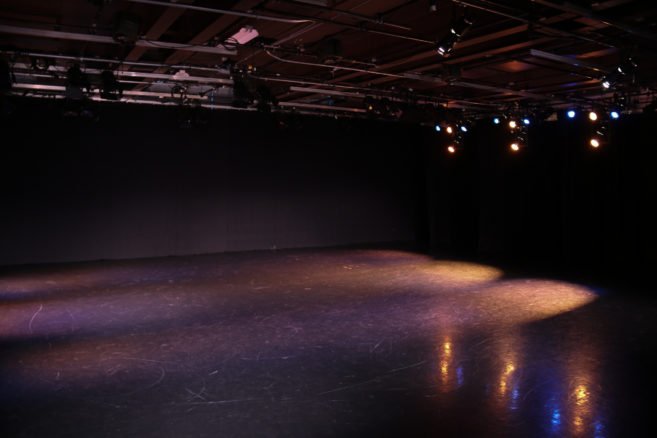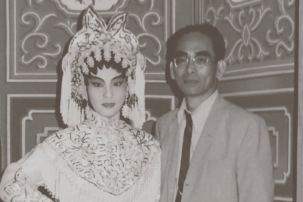In 2018, Toronto faces a double return of the repressed: Ontario Premier Doug Ford is a more powerful mirror of his brother Rob, Toronto’s controversial former mayor, and a more strident and aggressive version of Mike Harris, Ontario’s former premier.
More than two decades ago, on June 26, 1995, Harris swept to power with a majority Progressive Conservative government. Harris called his platform the “Common Sense Revolution.” It focused on direct cuts to a broad spectrum of social services including welfare, education and health care. The government dismantled regulations and cut staff overseeing the environment and urban planning, opening the door to intensive resource extraction, unregulated pollution and suburban sprawl. It cut funding for public housing, including buildings already under construction, and downloaded the responsibilities for housing administration to municipalities while streamlining the process of eviction from market rental properties. For many people, including artists, there was no longer a safety net. These policies multiplied the precariat. In response, the Conservatives attempted to discipline the poverty they produced, forcing welfare recipients to work menial jobs and criminalizing the poor with the so-called Safe Streets Act.
Frustration mobilized a wide spectrum of voices, including the Canadian Union of Public Employees (CUPE), the National Action Committee on the Status of Women (NAC) and the Ontario Coalition Against Poverty (OCAP). Metro Days of Action were organized for Friday October 25 and Saturday October 26. Estimates of the size of the protest, billed the largest in Toronto’s history, ranged between 75,000 by the police to 200,000 by the organizers, while hundreds of thousands more stayed away from work for Friday’s general strike.
The energy was contagious, demanding action. We wanted to respond, but placards and folksongs, the given tools of protest, didn’t match our desires or our skills, so we returned to the arrested utopianism of the late-modern avant-garde. Influenced by the Situationists, we thought of protest as a site of play. Splinter was an (anti)architecture zine produced in Toronto by editors Kenneth Hayes and Barry Isenor, which catalyzed a circle of friends and a conversation about art and architecture. These conversations often circled around projects of late-modern, radical “an-architects” and a politicization of the minimal and post-minimal forms of the 1960s and 1970s.
The October Group, which consisted of designers, artists and filmmakers including Adrian Blackwell, Cecelia Chen, Daniel Diaz Arrasco, Kenneth Hayes, Barry Isenor, Mike Lawrence, Christie Pearson, Kika Thorne, Wiebke von Carolsfeld and Derrick Wang, installed a large inflatable structure over the air vents in front of Toronto City Hall. We worked together to prefabricate the structure at 9 Hanna Avenue, a former munitions warehouse with a vast, unused interior space. We taped together two rolls of clear polyethylene vapour barrier to make a tube 9 feet in diameter and 150 feet long. The plastic was stapled to thin slats of wood, one-by-twos, with holes spaced evenly for butterfly clips, later used to attach the structure to the vent. We discussed whether the tube should be left clear or have anti-Harris slogans painted on it, but in the end we chose poetry. Along each side we spray-painted letters, amending two fragments of text: “Have mercy I cry for the city,” from a song by the Incredible String Band, combined with a longer quote by Soviet Futurist Velimir Khlebnikov: “to entrust the streets to the greed of developers and to give them alone the right to build is to reduce life to no more than solitary confinement.”

October Group, Untitled (inflatable), 1996. Photo: Kenneth Hayes.

October Group, Untitled (inflatable), 1996. Photo: Kenneth Hayes.

October Group, Untitled (inflatable), 1996. Photo: Kelly O'Brien.
On the night of October 25, 1996, we moved the sculpture to the air grates in front of Toronto City Hall. The structure was installed by more than 30 people, including the core group and our friends. We attached one side, lifted the plastic over the vents and then struggled to connect to the opposite side, the exhaust was so strong. For some reason the vents were suddenly turned off, making attachment possible, but then began sucking the plastic down as people struggled to crawl out of the tube. The vents turned on at 4 a.m. and holes had to be cut in the plastic surface to relieve the air pressure threatening to tear it apart. On the morning of October 26, Nathan Phillips Square was booked to host a rally by the Metro Toronto Labour Council. At 6 a.m. the organizers demanded we remove the structure. We argued, to buy time, and discovered that the City Parking Lot Attendants were striking prior to the general strike, and the air vent was their domain. They appropriated the structure, picketing through the tunnel and winning over the Steelworkers, who rallied to defend it.
Supported by escaping air, the 150-foot-long transparent tunnel was a giant, noisy street toy, something you could wander, dance or ride through. From rave kids to families, everyone was invigorated by its urgent energy. This action referenced both public institution and temporary home to protest the destruction of affordable and rent geared-to-income housing in Toronto.
In late 1996, in a move that laid the groundwork for Doug Ford’s 2018 evisceration of Toronto City Council, Harris undermined local democracies by reducing the size of municipal governments across the province, and in 1997 passed the City of Toronto Act, which outlined the planned amalgamation of six cities—Scarborough, Etobicoke, North York, East York, York and Toronto—into one. On March 1, 1997, the February Group responded, altering the function of the city hall plaza by laying 66 discarded mattresses on its pavement. The group was made up of Adrian Blackwell, Cecelia Chen, Luis Jacob, Christie Pearson and Kika Thorne, but many others supported us, both in and outside city hall, including Claire Ironside who worked in the planning department. We found the beds on late-night explorations of neighbourhoods around Toronto, and arranged them on the square in a loose grid. They acted as both a warning of possible homelessness and migration a megacity could bring, and as a utopian structure inviting citizens to occupy the plaza. The mattress raft was a 24-hour sculpture, dismantled on the eve of Toronto’s megacity referendum.

February Group, Untitled (mattresses), 1997. Photo: Luis Jacob.

February Group, Untitled (mattresses), 1997. Photo Adrian Blackwell
Appearing bright against the expanse of wet concrete, the used beds invited occupation as a surface on which to sit, run, bounce or lounge. We handed out a zine that read: “Home is where you put your bed. Placing our beds in public does two things. It acknowledges that to be in public is to be awake to what is going on: it asserts that even our private actions bear public weight.”
The referendum results were telling, with over 75 per cent of voters against the megacity, in the highest voter turnout in municipal history. When the Ontario Conservatives forced amalgamation, we knew that democracy meant little to the government.
Come spring, the Ontario Coalition Against Poverty asked a few artists to create individual memorials for the homeless people who had died in and around Allen Gardens, a park in the downtown core. The April Group (Adrian Blackwell, Cecelia Chen, Christie Pearson and Kika Thorne) made Sod Roll for Shawn Keegan. Shawn was a 19-year-old murdered by a serial killer john. In response to their death, we cut into the grass and rolled it back, the fresh earth vivid against the green, making a bed, a grave, a sleeping roll.
Though a project may be instigated by one or more people, once the collective was formed, the form was collective.
One common thread running through these projects is the importance of collective authorship. We discovered that this process has a number of elements. First, we found each other because of shared interests: we privileged play, quotidian materialism, minimalism, ephemeral architecture, new form. Second, we worked on the principle that the affirmation of ideas was as important as bringing them, and the objective was to rally around the strongest concept. Third, the work we made individually became elements in a library of possible forms we could offer the group. Fourth, as the work was born of political unrest, we needed to produce a collective representation of our dissent. Fifth, this allowed us to work at a scale that reflected our numbers. Finally, though a project may be instigated by one or more people, once the collective was formed, the form was collective.
The February Group met at the Imperial Pub’s Library Lounge, south of Ryerson University. The imaginary artwork emerged as it passed from person to person, amended by an occasional sketch or diagram. This process resonates with Michel Serres’ “Theory of the Quasi-Object.” Nothing but a skin of air activated by subjectivities; a ball is power, but if a person holds it too long, that power dissipates, and the game is lost. “The ball isn’t there for the body”, writes Serres, “the body is the object of the ball: the subject moves around this sun. …It is the abandon of my individuality…Being is abolished for the relation. Collective ecstasy is the abandon of the “I”’s on the tissue of relations.”
The production of a collective concept, the circulation and participation, was the conduit for intersubjectivity. Looking back, our minimalist seriality, utopian fantasies, political anarchism and ecological urbanity were “givens,” shared fields that allowed us to circulate the ball. Someone might score the goal, but so many passes constructed the form, and as we passed, listening with care, frustration and laughter, we became collective. Our participation made us uniquely singular as we wove a tissue of relations.
 April Group, Sod Roll for Shawn Keegan, 1997. Photo: April Group.
April Group, Sod Roll for Shawn Keegan, 1997. Photo: April Group.
These projects also created what Kojin Karatani calls a “parallax” view, as they oscillated between critique and affirmation. The October Group project juxtaposed utopian architecture with a flimsy shelter. On the one hand, we were inspired by the future-oriented radical architecture of the 1960s (including collectives such as the Austrian Coop Himmelblau and Haus Rucker Co., San Francisco’s Ant Farm, London-based Event Structure Research Group) but on the other we wanted to create a form that revealed the absence of a provincial housing strategy—and to point out that the only warm place many people have to sleep is an air grate. This abject euphoria escalated with the February Group action: each mattress registered messy, vulnerable humans while the vast, soft surface invited joyful occupation. Our gesture—exposing the power of vulnerability—was immediately legible as a form of shaming. Referendum results mirrored our dissent.
By the time we created Sod Roll for Shawn Keegan, our euphoria had turned to melancholy. Its alternation between the comfort of bed and the cold of the grave was specific to the loss of Shawn Keegan, but perhaps it unconsciously registered the waning of our confidence in the potential of democratic action to change the course of politics in the province.
Premier Doug Ford has accomplished a lot in his first hundred days, yelling about his democratic mandate and the lack of due process in his predecessor’s acts, while destroying them without consultation at the stroke of a pen. Since June 7, the Conservatives have scrapped cap and trade and the Green Energy Act, the sex education curriculum, the Indigenous curriculum review and any new safe injection sites. Strongly echoing the policies of the mid-1990s, Ford has cut the number of municipal councillors in Toronto (nearly) in half, and cancelled both the 2019 increase to minimum wage and the basic income pilot project. With 1,302 days still to go, Ford’s party has plenty of time left to inflict more damage on the province’s social welfare system.
In the years that followed the series of Group actions, we pursued collective experience through Toronto’s Anarchist Free School and projects including ambience of a future city. This year, we formed Gentrification Tax Action (GTA) with Sameer Farooq and Jane Hutton to address the lack of affordable housing in Toronto. The Gentrification Tax would tax any increases in the sale value of homes within the first 10 years after purchase, declining from 100 per cent in the first year to zero per cent after year 10. Income from the tax would be used to fund local self-managed affordable housing in the form of land trusts and cooperatives. This proposed legislation would curb house flipping, calm the market and make the city more affordable for low- and middle-income residents, as Toronto becomes increasingly unliveable. Like the parallels between the politics of the Harris and Ford eras, the Gentrification Tax shares the paradoxes of the October and February Group actions: both utopian and critical, it gives form to our collective despair in this time.

Gentrification Tax, billboard in Trinity Bellwoods Park, Toronto. February 25, 2018. Photo Gentrification Tax Action

Good People Are Leaving Centre 3 Window, Hamilton. November 3, 2018. Photo Gentrification Tax Action







